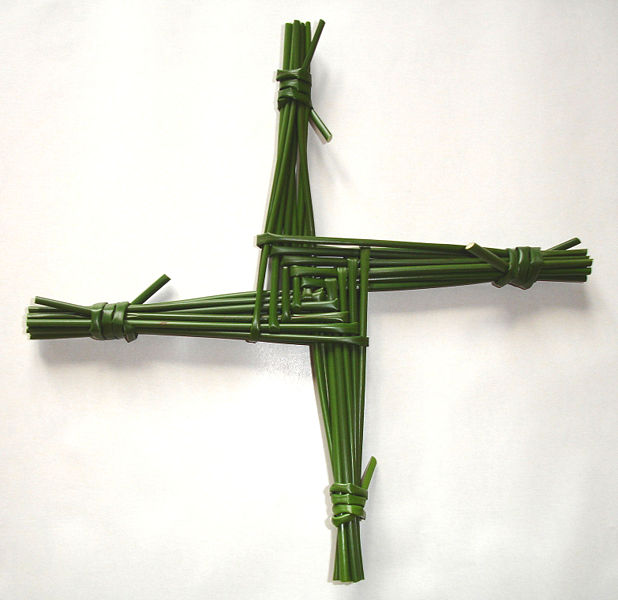| This Week’s Topic… | |

Best viewed in
|
Brigid's Cross Brigid's cross, Brighid's cross, or Brigit's cross, or (in the Irish language) Cros Bríde, Crosóg Bríde or Bogha Bríde, though not recorded before the seventeenth century, is an Irish symbol that possibly derives from the pagan sunwheel. It is usually made from rushes or, less often, straw. It contains a woven square in the centre and four radials tied at the ends.
Many rituals are associated with the making of the crosses. These were formerly commonplace but are now rare. Occasionally Roman Catholic homes still feature Brigid's crosses, especially in rural areas. It was traditionally believed that a Brigid's Cross protects the house from fire and evil. In Christian mythology, St. Brigid and her cross are linked together by the story that she wove this form of cross at the death bed of either her father or a pagan lord, who upon hearing what the cross meant, asked to be baptized. One version goes as follows: A pagan chieftain from the neighborhood of Kildare was dying. Christians in his household sent for Brigid to talk to him about Christ. When she arrived, the chieftain was raving. As it was impossible to instruct this delirious man, hopes for his conversion seemed doubtful. Brigid sat down at his bedside and began consoling him. As was customary, the dirt floor was strewn with rushes both for warmth and cleanliness. Brigid stooped down and started to weave them into a cross, fastening the points together. The sick man asked what she was doing. She began to explain the cross, and as she talked, his delirium quieted and he questioned her with growing interest. Through her weaving, he converted and was baptized at the point of death. Since then, the cross of rushes has been venerated in Ireland. |
